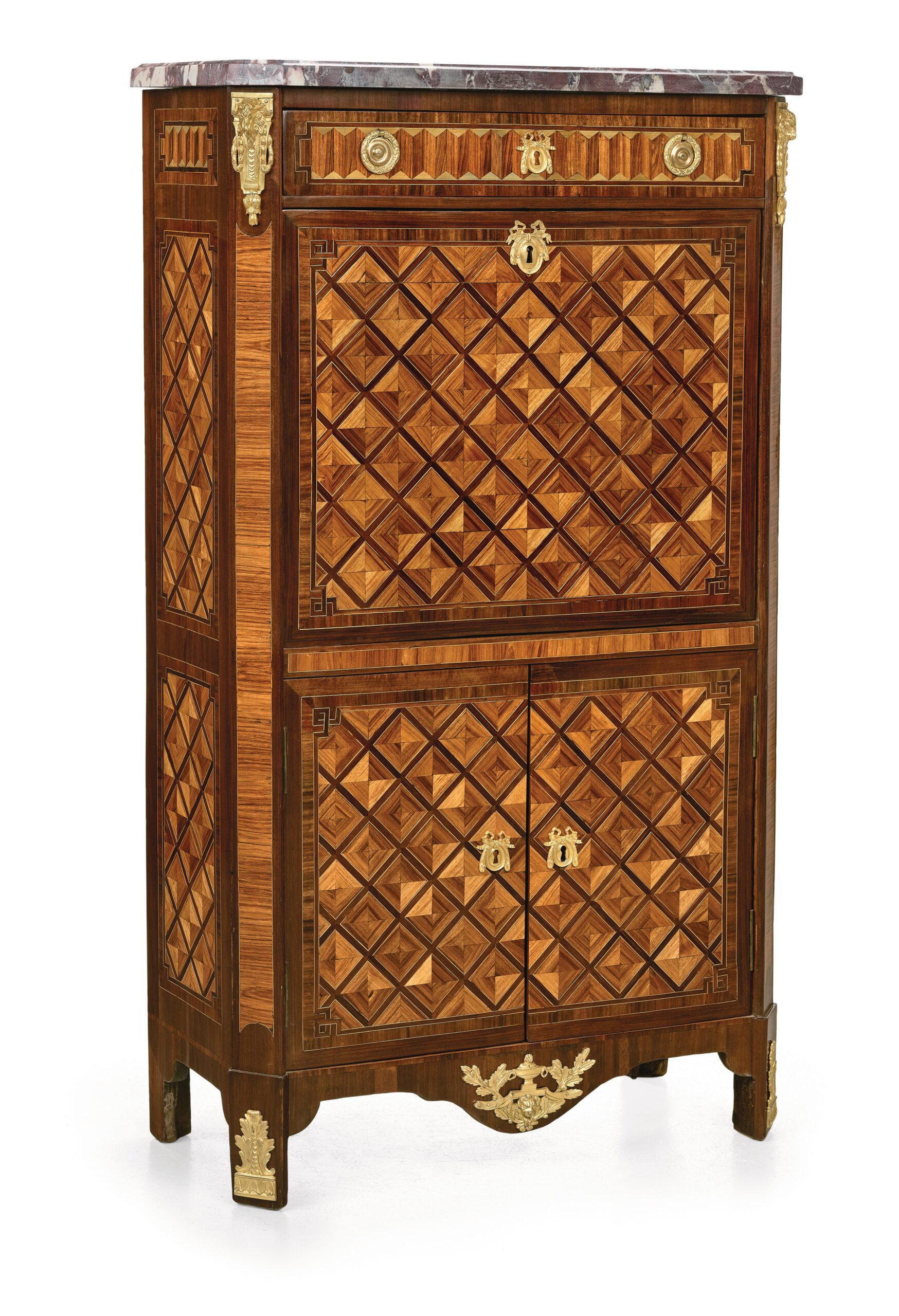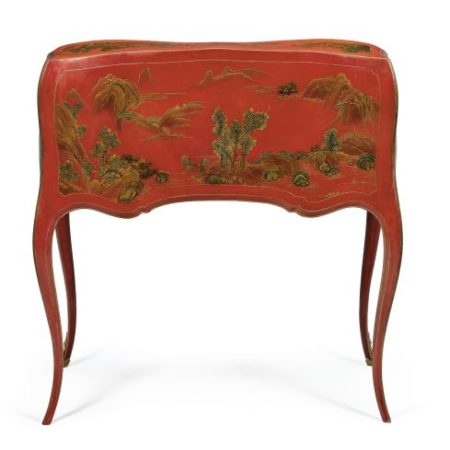Secretaries
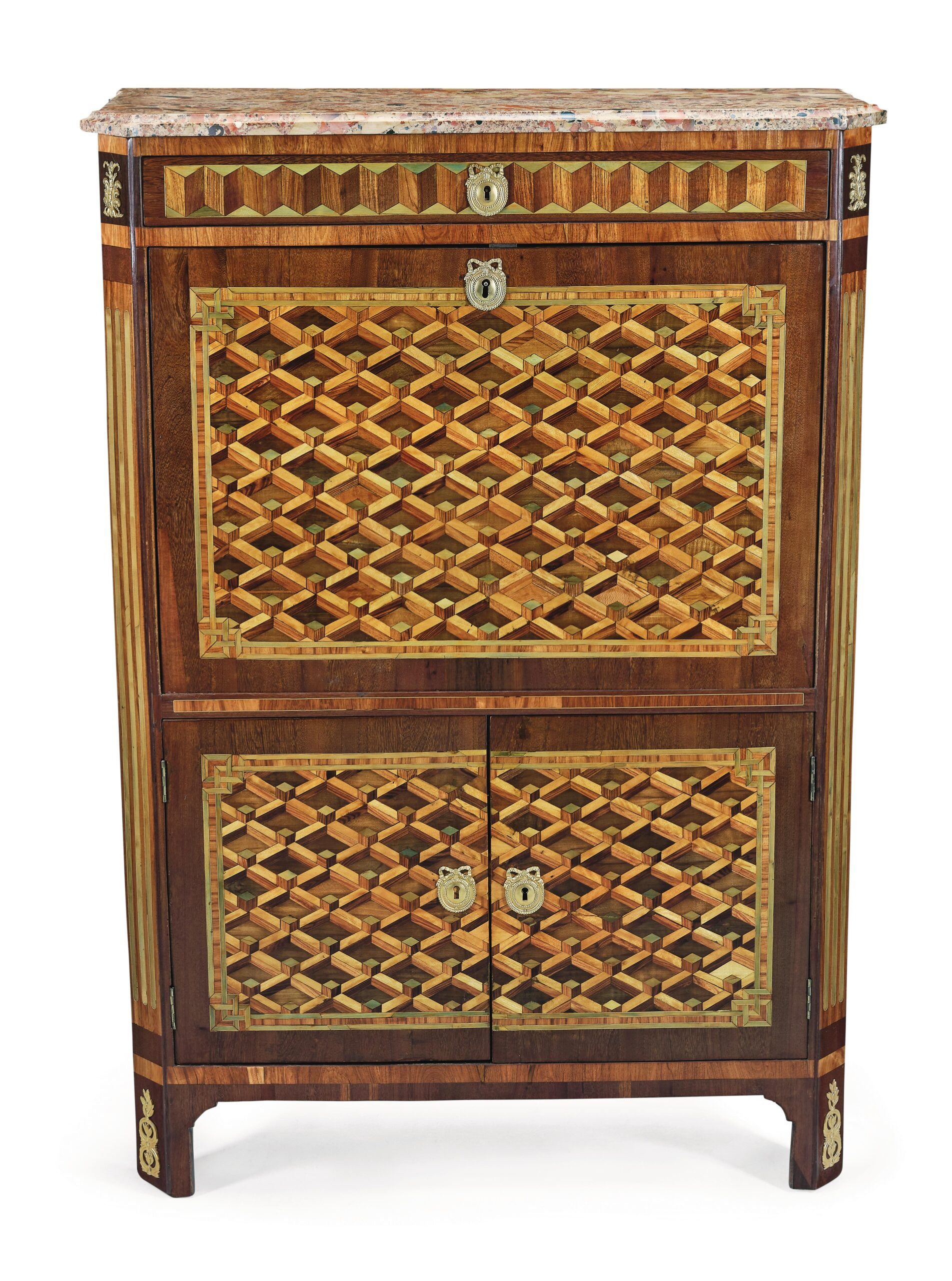
 Sold
SoldLouis XVI period, by the French cabinetmaker Jean Chrysostome Stumpff (master from 1766), circa 1775, stamped, softwood body, veneered with rosewood and amaranth as well as with various partially coloured precious woods, marquetry in pattern themes typical of this cabinetmaker, polished in traditional craftsmanship, 2 doors, 1 drawer and writing flap on the front, interior with 6 inner drawers, open compartments and two gold-decorated cartoniers, gilded chiselled bronze mounts, 139 x 97 x 98 cm, beautiful, perfectly restored condition.
This type of “Trompe-Oeil” marquetry, a combination of cube and diamond patterns, can be found on chests of drawers and desks as well as on secretaries by Jean Chrysostome Stump. This three-dimensional pattern, most probably invented by Stump himself, became such a success that other renowned ebenists such as Roger Vandercruse, Pierre Roussel and Jean George Schlichtig also used it on their furniture. Two almost identical secretaries are illustrated in Pierre Kjellberg’s reference book “Le Mobilier francais du XVIII siecle”, 1998 edition, as works by Jean Chrysostome Stump (page 827) and Jean Georges Schlichtig (page 791). Subject to species protection (ASB)
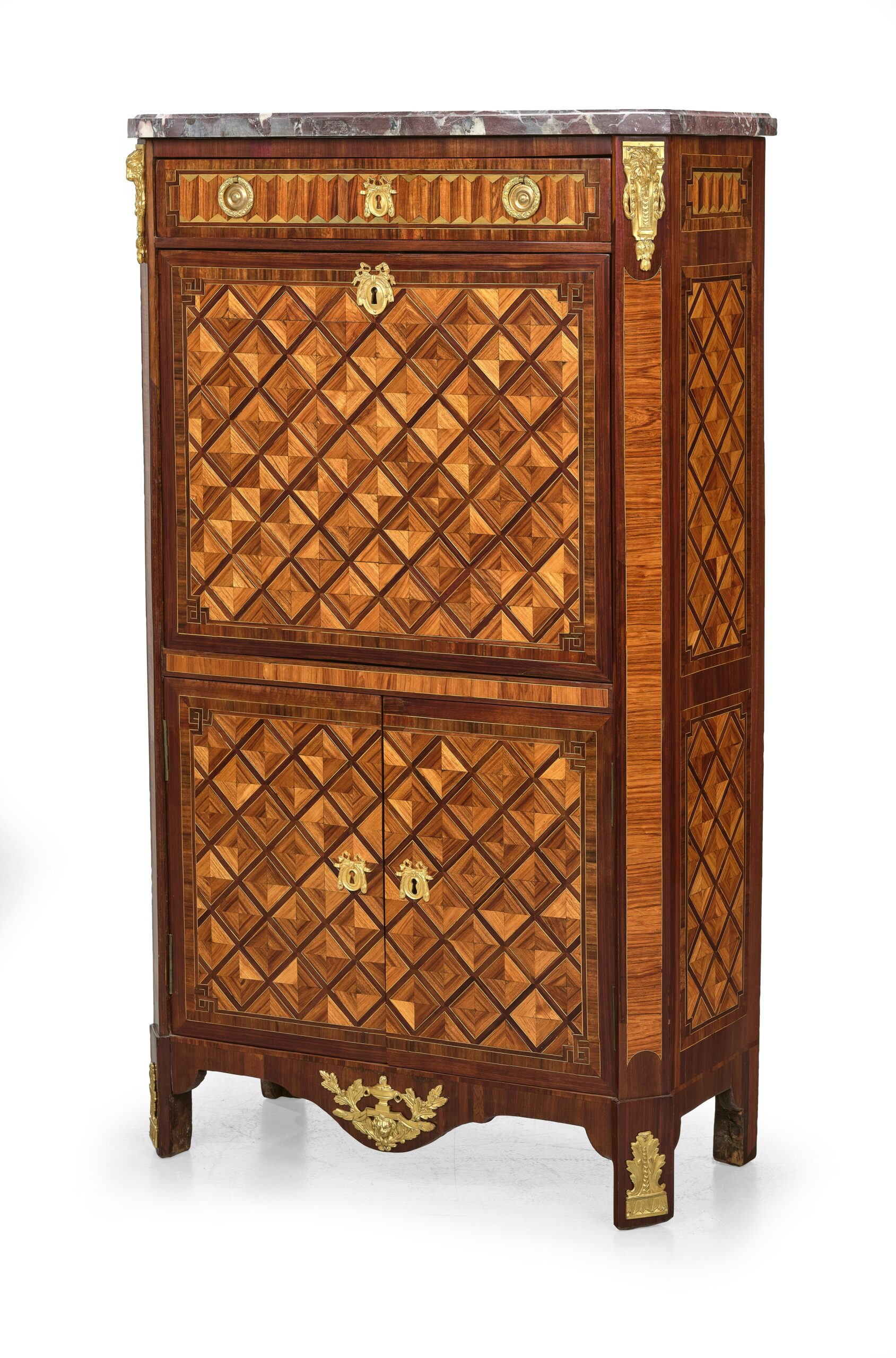
 €12,000.00
€12,000.00Louis XVI period, c. 1780, oakwood body, veneered with rosewood and amaranth, and with various, with marquetry panels, ornamental motifs and lattice pattern with partly dyed precious woods, polished finish in traditional artisanal technique, two doors on the front, one drawer and fall-front, interior with four drawers and open compartments, replaced leather covering with gilt decor, gilt bronze fittings, stamped J G SCHLICHTIG, marble top probably supplemented in the 19th century, 138.5 x 78 x 37.5 cm, beautiful professionally restored condition.
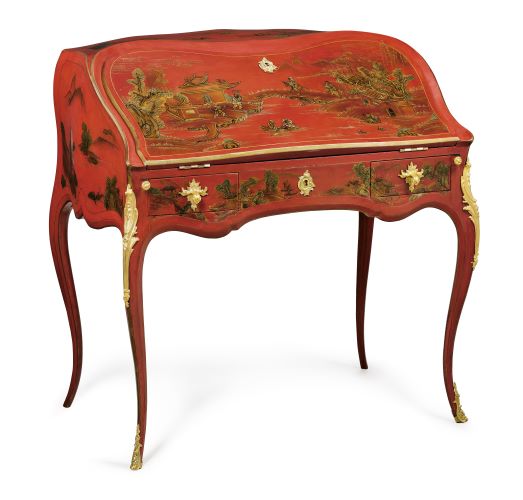
 €7,500.00
€7,500.00Louis XV style, France, end of the 19th century. Various hardwoods and softwoods, veneered, primed in red, decorated in lacquer technique in the form of landscape scenes on the reverse side, raised work. Two drawers on the front, sloping writing. Writing flap and two pull-out support slats. Interior with four drawers, sliding back bottom section, top and inside with red leather upholstery decorated with gold, gilded bronze ornamental fittings. Dimensions: 93 x 90 x 56 cm, beautiful restored condition
Antique Secretaries: Timeless Functionality and Elegance
Secretaries are elegant and functional pieces of furniture designed for document storage and as a refined writing surface. Combining beauty with practicality, antique secretaries have evolved over centuries to become iconic elements of sophisticated interiors.
The History of Secretaries: From Renaissance to the 19th Century
The origins of secretaries trace back to the 16th century, particularly in Italy and Holland, where exquisite cabinets were crafted. These delicate corpus pieces, standing on higher feet, featured an abundance of drawers, compartments, and hinged doors. During the Renaissance, they were considered among the most luxurious furniture items, made from materials such as ebony, ivory, tortoiseshell, and precious stones.
By the early 18th century in Central Europe, secretaries evolved from tabernacle cabinets, incorporating a hinged writing surface to offer greater versatility. This development marked the beginning of the secretary’s rise to prominence in aristocratic homes and offices.
French Secretaries: A Legacy of Refinement
From the Louis XV period onward, France became renowned for producing a diverse array of secretary types, each meticulously crafted to suit different needs and settings. Some of the most notable styles include:
- Stand Secretary (Secrétaire à abattant or secrétaire droit) – A practical design with a hinged writing surface that closes when not in use.
- Writing Commode (Commode formant secrétaire) – Combining storage with an elegant writing area.
- Travel Secretary (Secrétaire de voyage) – Compact and designed for portability, perfect for traveling aristocrats.
- Cylinder Secretary (Secrétaire à cylindre) – Featuring a rolling cylindrical cover for a seamless and sophisticated look.
- Slant-Top Secretary (Secrétaire de pente or “dos d’âne”) – Featuring a sloped writing surface, adding charm and functionality.
- Ladies’ Secretary (Bonheur du jour) – A refined design, often adorned with delicate ornamentation, intended for personal correspondence.
- High Secretary (Secrétaire en guillotine) – Tall, space-saving models with an elegant vertical design.
- High-Legged Secretaries (Secrétaire en cabinet) – Elevated designs that blend practicality with grace.
Each of these forms remained popular through the Louis XVI, Empire, and 19th-century periods, reflecting evolving artistic tastes and functional needs.
Exquisite Materials and Craftsmanship
Antique secretaries were crafted from high-quality veneered woods, often featuring elaborate marquetry and intricate chinoiserie designs. Many pieces were adorned with luxurious bronze doré fittings, adding a touch of opulence. The combination of artistry and expert craftsmanship made these pieces highly sought after, both in their time and today.
Invest in a Timeless Piece
An antique secretary is more than just a piece of furniture; it is a testament to history and craftsmanship. Whether used as a statement piece in a modern home or as a practical addition to a traditional office, a well-preserved antique secretary offers a perfect blend of elegance and utility.
Explore Our Collection of Antique Secretaries
Discover our exquisite range of antique secretaries in our online store or visit our Vienna showroom to experience their timeless charm firsthand. Whether you are looking for a classic writing desk or a decorative storage piece, our collection offers a variety of styles to suit your unique taste and interior.



